Does your toilet paper contain indications of toxic PFAS “forever chemicals?” Mamavation was asked that question by our audience and the only way to find out was to send the most popular toilet paper products to the lab. So that is what we did in our latest consumer study on PFAS. You’ve trusted Mamavation to bring you topics like best green beauty makeup sans PFAS, best & worst cookware sans PFAS, & best water filters to capture PFAS, now join us for a consumer study on indications of PFAS and toilet paper. Scroll down to the bottom of this post to see the raw data from our EPA-certified laboratory.
Disclosure: This consumer study is released in partnership with Environmental Health News. Scientific reviews were performed by (1) Terrence Collins, Teresa Heinz Professor of Green Chemistry & Director of Institute for Green Sciences at Carnegie Mellon University, (2) Linda S. Birnbaum, Scientist Emeritus and Former Director of the National Institute of Environmental Health Sciences and National Toxicology Program, (3) Pete Myers, Chief Scientist at Environmental Health Sciences, Adjunct Professor of Chemistry at Carnegie Mellon University, and Co-Author of Our Stolen Future, & (4) Scott Belcher, Associate Professor with the Center for Environmental & Health Effects of PFAS at North Carolina State University. This post was medically reviewed by Sondra Strand, RN, BSN, PHN. Donations were provided by Environmental Health News and Mamavation community members. Mamavation has only “spot-checked” the industry and thus we cannot make predictions about brands and products that we have not tested. Products and manufacturing aides can change without notice so buyer beware. This post contains affiliate links, with some to Amazon, which means Mamavation will receive a portion of those sales and we will use that to pay ourselves back for the testing. You can also give a tax-deductible donation to our consumer studies here through Environmental Health Sciences. Click “yes” when asked if the gift is in honor of someone and type “Mamavation.” Thank you!

Table of Contents
Mamavation Finds Indications of PFAS in Toilet Paper
PFAS “forever chemicals” are per- and polyfluoroalkyl substances used as stain-resistant, water-resistant, & oil-resistant chemicals in commerce. They have been used for decades inside consumer products, manufacturing, and building materials. There are over 12,000 different chemicals in the PFAS chemical class (including PFOA & PTFE), and because there are so many of them, they are incredibly hard to identify and test for. In fact, it’s only really possible to identify about 100 or so in a really good commercial laboratory.
The biggest problem with PFAS is their staying power–they do not leave the environment or our bodies for many many years, which is the reason they are dubbed “forever chemicals.”
Mamavation sent 17 toilet paper products to an EPA-certified laboratory to test for organic fluorine, which is a marker for PFAS “forever chemical” compounds. We included as many types of toilet paper we could such as bamboo, sugarcane, recycled, and conventional wood pulp. We purchased the products between October 2021 and June 2022 from Amazon.com, using Instacart, or in-store from retailers in Los Angeles.
Here are the main findings from Mamavation’s Toilet Paper PFAS Consumer Study:
- 24% of toilet paper tested at Mamavation’s EPA-certified lab had indications of PFAS “forever chemicals”, while 76% of toilet paper tested did not. In other words, 4 out of 17 products contained indications of PFAS “forever chemicals.”
- According to our lab, levels of organic fluorine, a marker for PFAS, were found between 10 parts per million (ppm) to 35 parts per million (ppm).
- 50% of the products with detectable levels of organic fluorine were bamboo products. In other words, 2 out of 4 detectable products were made from bamboo, one was made from conventional wood pulp, and one was made from recycled paper.
When PFAS is detected in personal care products, such as toilet paper, in the amounts we are seeing they are unlikely added on purpose but are more likely present due to manufacturing or packaging contamination of some kind in the supply chain.
[updated to add on 10/22: We tested additional brands based on public demand. 6 additional toilet paper products tested bringing the total to 23. 22% of all toilet paper sent to the lab came back with indications of PFAS. Overall, 3/5 brands with detections were made of bamboo.]
Potential Health Impacts of Exposure to PFAS “Forever Chemicals” in Toilet Paper
PFAS “forever chemicals” are problematic to human health and the environment. They are considered ubiquitous, persistent, and toxic. Many can last for years in our bodies. Therefore, it’s imperative to reduce the amount of PFAS you are exposed to from food and water and personal care products such as toilet paper. No one knows the direct impact of using toilet paper with indications of PFAS, but that doesn’t mean there is no danger.
However, we do know what the health impacts are when exposure to PFAS through water and food and they are listed below:
- Reduction in immunity
- Reduced vaccination response
- Increased risk of allergies & asthma in young children
- Affected growth, learning, and behavior of infants and older children
- Increase cholesterol levels
- Metabolic diseases like obesity & diabetes
- Cardiovascular disease
- Lowered a woman’s chance of getting pregnant
- Lowered male fertility
- Smaller penis size
- Increased the risk of kidney & testicular cancers
- Causes endocrine disruption
- Disrupted normal thyroid function

Special Consideration: Toilet Paper Touches Our Most Intimate Parts
Thousands of chemicals are used to process commercial paper products like baby wipes, toilet paper, and paper towels. But most importantly, what we put next to our body, especially touching our vascular private parts, has the potential to have an impact on our health.
There isn’t a lot known about dermal exposure of PFAS “forever chemicals” to our intimate parts, but that doesn’t mean that there is no danger; it really just means we don’t know the extent of the danger. But we do have some clues from studies that were done on dermal exposure and that potential problem:
- One study found that dermal exposure to PFBA demonstrated effects on the liver and showed similar results to oral PFBA and PFOA exposure.
- One study looking at PFAS in infant car seats found that PFAS can migrate from fabric to sweat, suggesting a potential risk of dermal exposure.
- Another study found that dermal exposure is similar to oral exposure to PFOA and can be immunotoxic.
Linda S. Birnbaum, Scientist Emeritus and Former Director of the National Institute of Environmental Health Sciences and National Toxicology Program says “PFAS cause effects in males and females of animals and people in nearly every organ and at every life stage. Because toilet paper is created to rub up against such vascular parts of the body, it’s logical to be concerned with this exposure.”
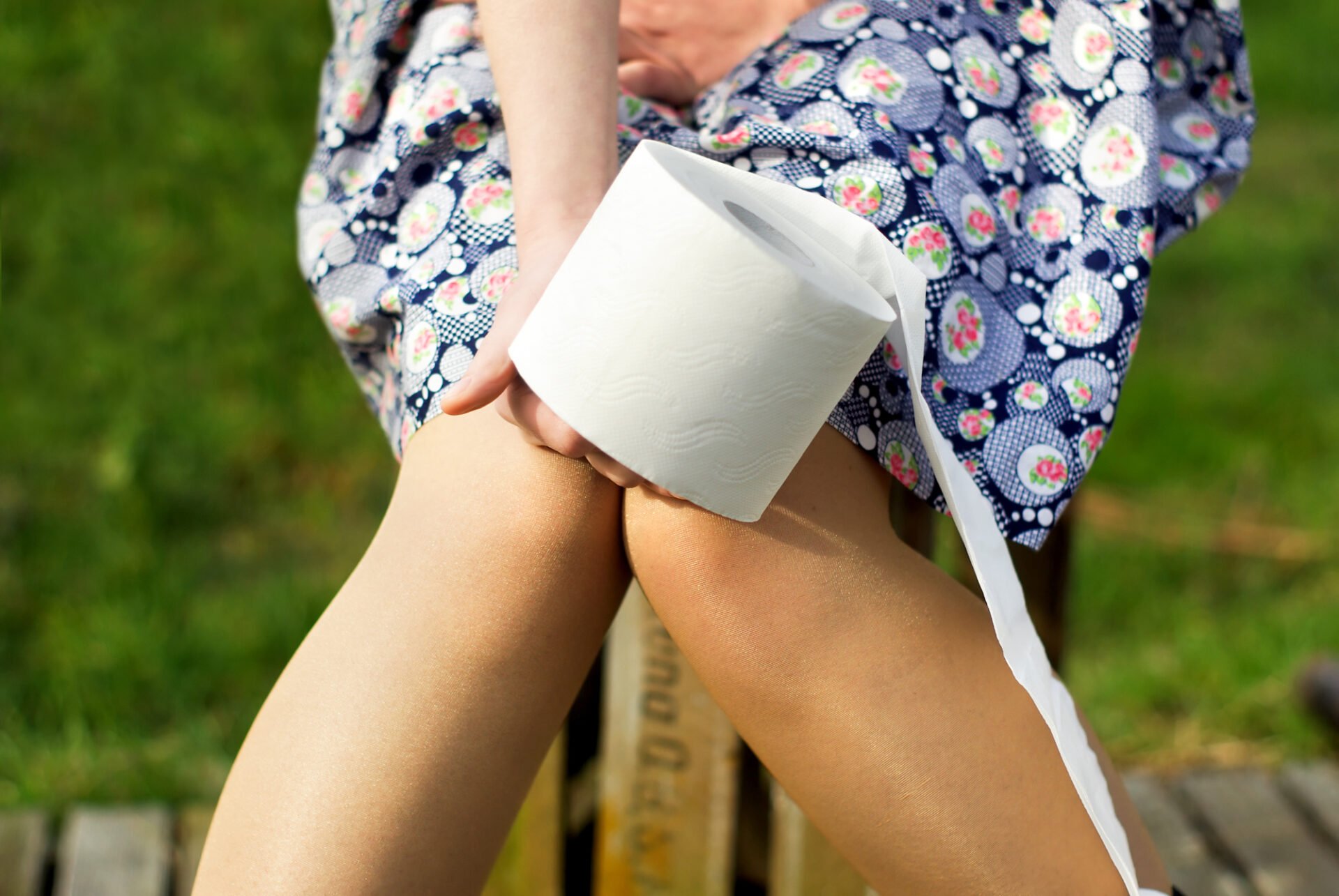
Bleaching — More Potential Health & Environmental Risks
Toilet paper has also been suspected of chronic irritation of the vulva because of bleach. Dyes made from petroleum can also be used to change the color of the toilet paper. In a 2010 study, they found that toilet paper may be to blame for chronic irritation of the vulva because a carcinogen, formaldehyde, was found present to improve the strength of the toilet paper. That’s concerning for any toilet paper using that type of bleaching method.
The American Forest & Paper Association (AFPA) recognizes these ways of bleaching and as you can see there are benefits and drawbacks to most methods:
- Elemental Chlorine Bleaching: Elemental chlorine is used to bleach and soften toilet paper. This process can pollute the environment. Most products manufactured in North America do not use this process anymore, however paper products manufactured overseas are more likely to use this method.
- Elemental Chlorine Free (ECF): While they don’t use the harsh element chlorine, they do use a chlorine derivative like chlorine dioxide. This process is far less toxic than using elemental bleach to process.
- Process Chlorine Free (PCF): This process is typically used by recycled paper products that have not been re-bleached with chlorine-based compounds. Because it’s recycled with the PCF method, it’s impossible to know whether the virgin papers were bleached with elemental chlorine or chlorine dioxide.
- Totally Chlorine Free (TCF): No chlorine or chlorine compounds were used to bleach the pulp. Instead, they use oxygen-based agents or hydrogen peroxide. Unfortunately, TCF is primarily done in China, which is unregulated and sometimes uses poor and unsafe standards.
- Unbleached: Means it’s untreated and typically very rough to the touch.

Additional Toxic Additives That Don’t Belong In Toilet Paper
Toilet paper with scents or lotions and flushable wipes likely contain problematic ingredients that enter as ingredients or as part of the manufacturing process. We are unsure at this point if the use of PFAS is part of how these additional ingredients are used or manufactured themselves. But it’s clear that these types of products are not considered eco-friendly toilet papers or sustainable toilet papers.
- Polyethylene Glycol (PEGs): This was a problem with flushable wipes. Many of them contained a variety of PEG compounds. Ethoxylated ingredients (like PEGs) on their own are of lower concern to humans, however, the process of ethoxylation can leave behind trace amounts of carcinogens: ethylene oxide and 1,4-dioxane.
- Undisclosed fragrances: Because there’s no way to know what components are in the fragrance, we have no way to know if the ingredients are harmful or can cause an allergic reaction. Synthetic musks and phthalates typically hide in hidden “fragrance” that is undisclosed. Phthalates are potent endocrine-disrupting chemicals linked to obesity, hyperactivity in children, and degraded sperm quality, among many other health problems.
- Paraffin wax: This is made from petroleum by-products.
Therefore, selecting toilet paper that does the least amount of harm to both our bodies and the environment is wise.

Bisphenol A (BPA) or Bisphenol S (BPS) Can Contaminate Recycled Toilet Paper
While recycled paper is, of course, the best option for the planet, there is one dirty little secret it is hiding–bisphenols like BPA and BPS. Bisphenols like BPA have been discovered as a hideaway inside recycled toilet paper according to a study published in the journal Environmental Science and Technology. Researchers found BPA levels in paper that were 100 to 1 million times higher than amounts detected in canned and packaged foods.
This is because thermal receipt paper and shipping labels, contaminated with bisphenols BPA & BPS, end up finding their way into recycled paper products like toilet paper. Bisphenols like BPA are endocrine disruptors and studies have linked them to reproductive problems, early puberty, low sperm count, obesity, and breast cancer.
(Luckily, thanks to Mamavation you no longer need to worry about bisphenols like BPA or BPS on the receipt paper at Target. A few years back, we petitioned Target to make their receipts safer and after gathering over 50,000 petition signatures and meeting with Target, they did so in 2020. Trader Joe’s, Best Buy, CVS, and other brands have followed suit, however not all brands have fixed their receipts so it’s still a big problem.)
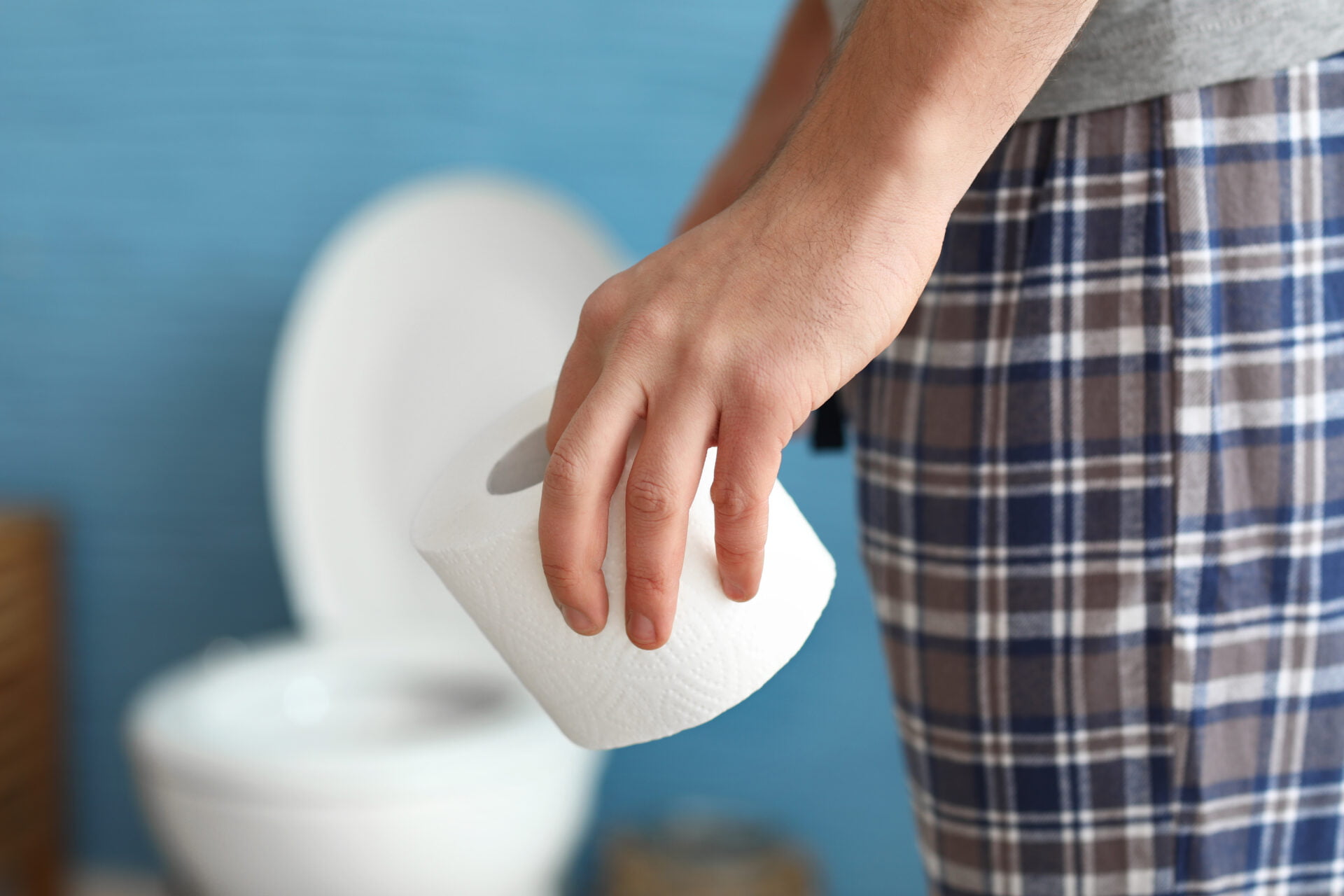
Estimation of How Much Potential PFAS Exposure is Possible Through Toilet Paper
Every year the average American consumer uses 12.7 kg of toilet paper, according to statistics from 2018, and that toilet paper ends up in sewage every year. If all toilet paper had 10 ppm, the average person flushed in 2018 in the US 12.7 kg = 12,700 g = 12,700,000 mg. (12,700,000 mg paper 0.000001 mg PFAS/mg paper)/person = 12.7 mg PFAS/person)
The population in the US in December 2018 was 328,082,386 persons. Therefore, 2018 National Releases = 12.7 mg PFAS/person x 328,082,386 persons = 4166646302.2 mg = 4166 kg = 4.165 tonnes of PFAS released to environment.
So not knowing how much PFAS-contaminated toilet paper was used (only know 4 brands had between 10-35 ppm), let’s use the lower limit and examine what the amount would be if 10% of the tissue used in 2018 was PFAS contaminated at 10 ppm and all toilet paper went to sewage. Therefore, about 0.4165 tonnes would be released to the environment through sewage sludge and municipal wastewater.
One of our main advisors has some context for you to share:
“The movie Dark Waters documented hideous injustice around the PFAS compound, perfluorooctanoic acid (PFOA). In bringing this injustice to light, Robert Bilott, the lawyer who did battle with DuPont over the PFOA poisoning of the Parkersburg citizenry, has become a magnificent American hero. His work led to the biggest epidemiological study of all time which found that PFOA is capable of immense health impacts at tiny doses.
Other PFAS compounds are known to share PFOA’s injurious properties. And because PFAS compounds tend to be impossible for nature to degrade on any meaningful time scale, the American people cannot seem to escape the impacts. It has become unacceptable that measurable amounts of PFAS should be found in everyday consumer products such as toilet paper” says Terrence Collins, Teresa Heinz Professor of Green Chemistry & Director of Institute for Green Sciences at Carnegie Mellon University.
Sustainable Issue–TP Production Disrupts Largest Carbon Sink in World
There are some additional considerations when selecting your toilet paper that have to do with the health of our Planet–most American toilet paper comes from the Canadian Boreal Forest, the largest carbon sink in the world.
Americans use close to 8 million tons of toilet paper per year according to Consumer Reports. Paper production like toilet paper, paper towels, baby wipes, tissue paper, coffee filters, & writing paper are incredibly toxic to the environment, leave a huge carbon footprint, and deplete forests all over the world. In fact, the paper production industry, according to the National Resource Defense Council, is the 3rd largest polluter.
One of the most important regions in the world for capturing carbon is the Boreal Forest in Canada in North America. Your toilet paper and toilet roll likely started there as a tree in the largest carbon sink in the world. Cutting down on toilet paper made from wood pulp and looking for alternatives like bamboo & sugarcane helps this effort. Watch how your choice of toilet paper helps fight climate change.
According to a report by the National Resources Defense Fund, “industrial logging claims more than a million acres of boreal forest every year, equivalent to seven National Hockey League rinks each minute, in part to meet demand for tissue products in the United States.” Long story short, if you want to become part of this solution, looking for alternatives would be the way to go. They are only logging the Boreal forest because we demand toilet paper made from wood pulp. Start demanding toilet paper made from bamboo & sugarcane instead.
Alternatives to Toilet Paper for Your Home — The Bidet
If you’ve ever traveled in Europe, the Middle East, or Asia, you may have come across a bidet. The bidet uses water to perform a similar function to toilet paper, but cleaner. Some bidets are stand-alone washbasins that are located close to the toilet, while other bidets can be hooked up to a regular toilet. No need for a pack of toilet paper or to buy any toilet paper in bulk when you have these systems.
Here are some bidets to check out to cut down on toilet paper use:
- Hello Tushy Classic Bidet (This is the one I have! Use discount code “NUMBERTWO2” for 20% off purchases.)
- Lux Self-Cleaning Bidet
- Lux NEO Bidet 185 Plus
- CRX Smart Toilet Bidet
- SmartBidet Electronic Bidet Seat
- BioBidet Bliss Elongated Toilet Seat
- SmartBidet Electric Bidet Seat
- Brondell Swash Elongated Bidet
- Brondell Advanced Bidet
- BLAUX Electric Portable Bidet
- Sanamity Toilet with Bidet & Dryer
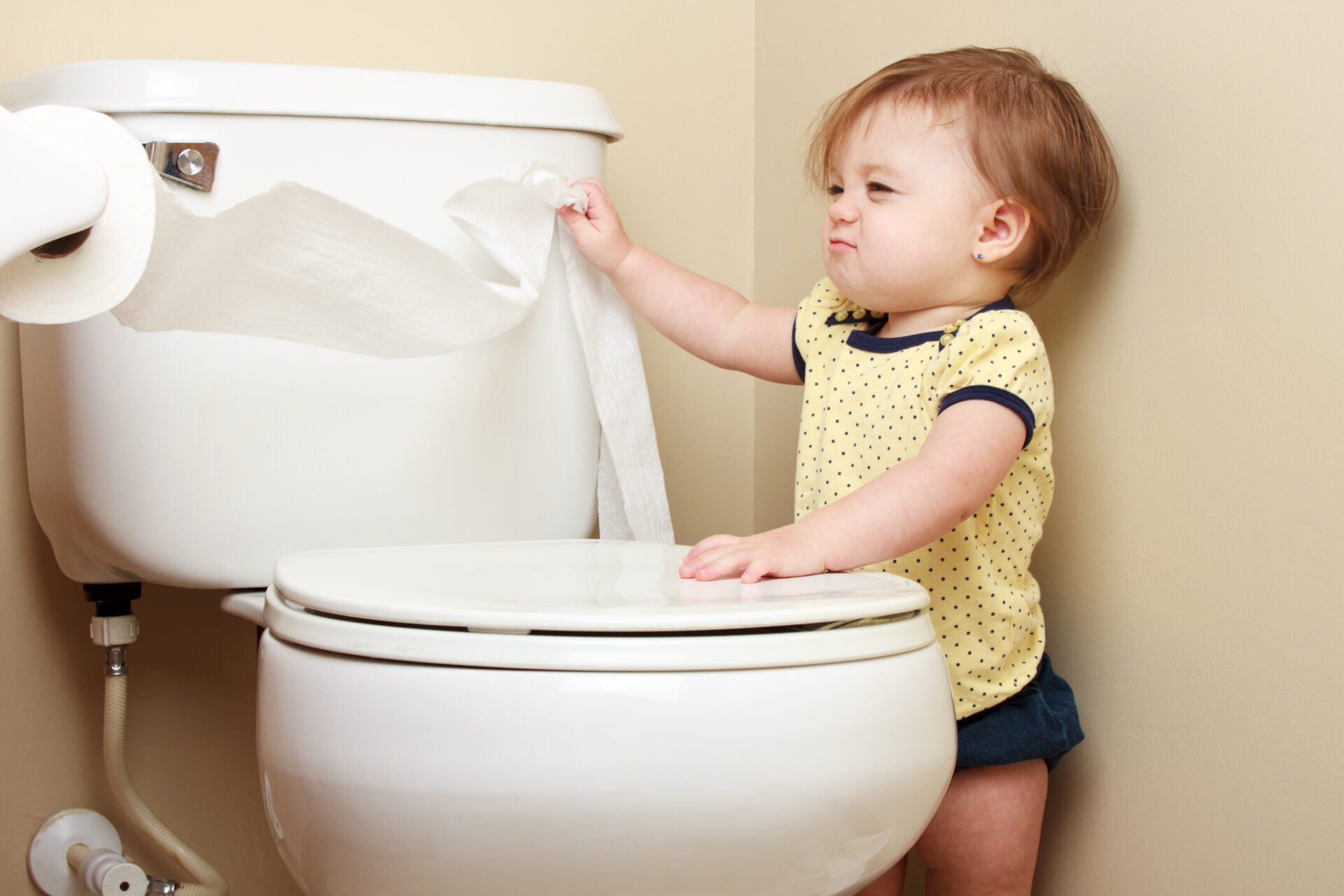
Mamavation’s Investigation of Toilet Paper & PFAS “Forever Chemicals” — Raw Data From Lab
Mamavation sent 17 different toilet paper products off to an EPA-certified laboratory to look for indications of PFAS “forever chemicals.” The products consisted of conventional toilet paper, FSC certified toilet paper, bamboo toilet paper, and bamboo & sugarcane blended toilet paper. We did not purchase any products specifically for septic tanks or septic systems, but some of these products are considered septic safe.
Mamavation’s lab used marker testing to identify the potential presence of PFAS “forever chemicals” in toilet paper products. Organic fluorine is a marker for PFAS because all PFAS chemicals are carbon-based compounds that contain fluorine. The specific lab method used by Mamavation tested for total fluorine was the Determination of Total Fluorine by Oxygen Flask Combustion and Ion-Selective Electrode. If total fluorine was observed at a detection level of 10ppm, the lab did the Determination of free Fluoride Ion in the toilet paper by Ion-Selective Electrode and then subtracted that from the Total Fluorine to determine the amount of organic fluorine. This marker testing is likely to show the presence of PFAS, but other possibilities are things like fluorinated pesticide residue and fluorinated pharmaceuticals.
4 brands out of the 17 brands we tested came back with detectable levels of organic fluorine, which means PFAS is likely present. Testing for PFAS directly is impossible to do because there are over 12,000 different compounds. Therefore, we are using this marker testing, which is also used by the food packaging industry to determine whether products are “compostable” or not.
Scott Belcher, Ph.D. & Associate Professor with the Center for Environmental & Health Effects of PFAS at North Carolina State University says “fluoropolymers, such as polytetrafluoroethylene (PTFE) or Teflon®, are extremely common forms of PFAS that could be contributing to the organic fluorine found in food products. Methods used for detecting individual PFAS, such as PFOA or GenX, cannot directly identify PTFE. However, the analysis of total organic fluorine does account for all PFAS contaminants in food, including PTFE. Therefore, this serves as a good ‘spot-check’ of consumer products.”
[updated to add: on 10/22 we added 6 additional brands based on public demand. 1/6 brands had indications of PFAS according to our lab. Therefore, 6/23 brands tested for indications of PFAS in total, which is 22%. The additional brand we added was also made of bamboo, bringing that total to 3/6 brands with detections made of bamboo.]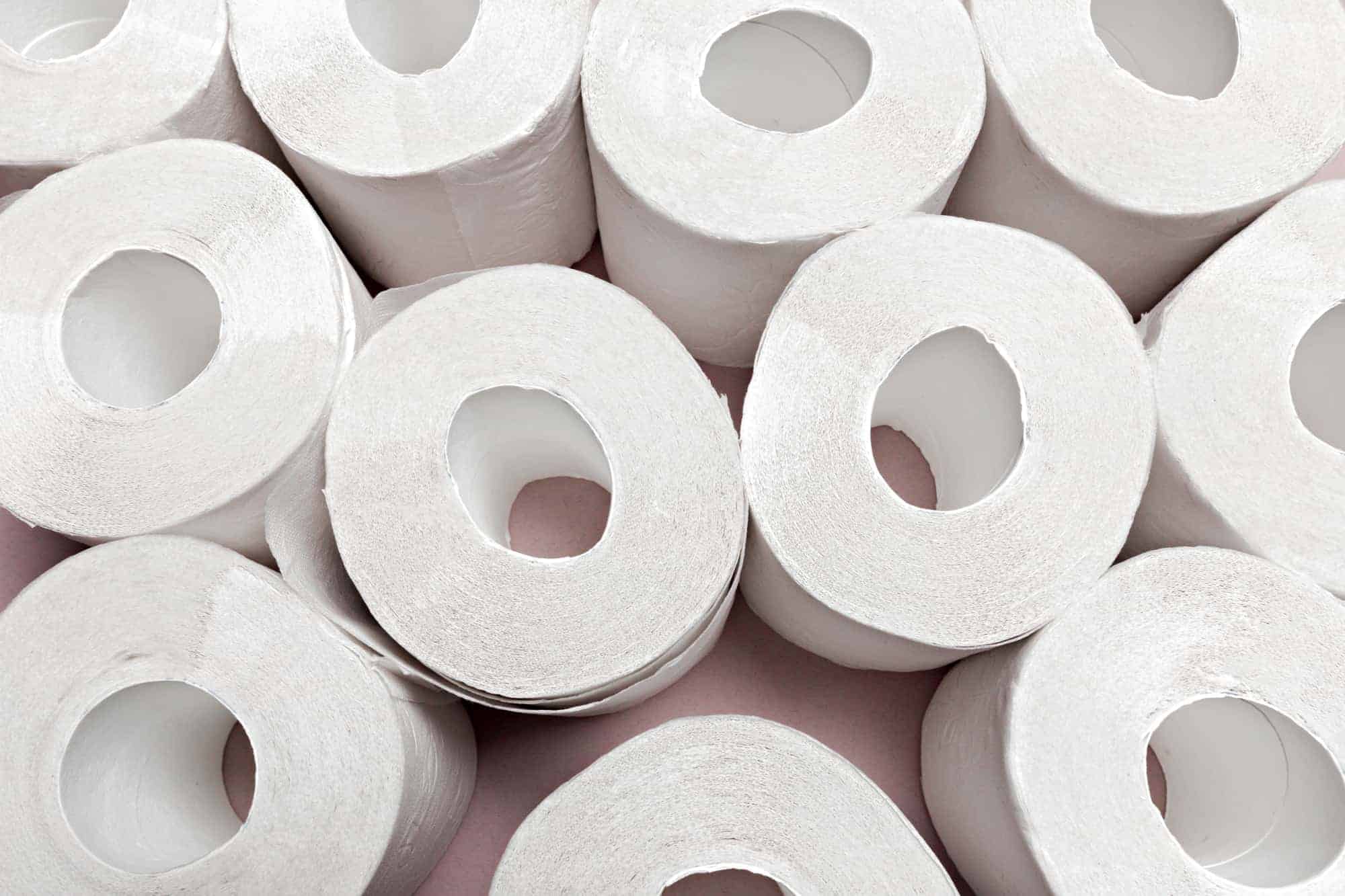
Not Our Favorite Toilet Paper
According to lab tests, these products contain organic fluorine, which is a marker for PFAS “forever chemicals.” We do not recommend you purchase from this category.
- Charmin Ultra Soft Toilet Paper — 13 parts per million (ppm) organic fluorine
- Seventh Generation 100% Recycled Bath Tissue — 35 parts per million (ppm) organic fluorine
- Tushy Bamboo Toilet Paper — 10 parts per million (ppm) organic fluorine
- Who Gives a Crap Bamboo Toilet Paper — 11 parts per million (ppm) organic fluorine
- DeBella Bamboo Septic Safe Bath Tissue — 10 parts per million (ppm) organic fluorine [updated on 10/22]
Better Toilet Paper
These products did not contain detectable organic fluorine but are not made of sustainable materials. These brands are very likely consuming materials from the Boreal Forest in Canada or a similar forest which is contributing to deforestation and adding more carbon to the atmosphere. Forest Stewardship Council (FSC) is preferred over Sustainable Forestry Initiative (SFI) certification for fibers.
- Angel Soft 230+ Sheets Double Roll Toilet Paper (made with Sustainable Forestry Initiative certified fiber)– non-detect organic fluorine
- Cottonelle Mega Ultra Comfort Care — non-detect organic fluorine
- Kirkland (Costco) Bath Tissue — non-detect organic fluorine [updated on 10/22]
- Presto (Amazon) Ultra-Soft Septic Safe Toilet Paper — non-detect organic fluorine [updated on 10/22]
- Scott 1000 Sheets Per Roll Toilet Paper (made with FSC Certified fiber)– non-detect organic fluorine
- Signature Select (Albertsons) Mega Ultra Premium Bath Tissue — non-detect organic fluorine
- Trader Joes Super Soft Bath Tissue The Big Roll — non-detect organic fluorine [updated on 10/22]
- Quilted Northern Ultra Plush Soft & Strong Premium Comfort Toilet Paper (made with FSC certified fiber) — non-detect organic fluorine
- Value Corner (Safeway) Bathroom Tissue — non-detect organic fluorine
Best Toilet Paper
These products did not contain detectable organic fluorine and are also made of more sustainable materials like 100% recycled wood pulp, bamboo, and cane sugar. Because sometimes recycled papers can contain trace amounts of bisphenol S (BPS) or bisphenol A (BPA), we prefer you choose from the bamboo or cane sugar versions. Processing is either chlorine-free or elemental chlorine free and fragrance-free.
- Caboo Tree-Free Bamboo Bath Tissue — non-detect organic fluorine (Use discount code “EHN25” for 25% off your purchase price at Caboo Products!)
- Cheeky Panda Eco-Friendly Natural Bamboo Toilet Paper — non-detect organic fluorine [updated on 10/22]
- Cloud Paper Bamboo Toilet Paper — non-detect organic fluorine [updated on 10/22]
- ECOS Treeless Bamboo & Sugarcane Bathroom Tissue — non-detect organic fluorine
- Nature Z Way Bamboo Bath Tissue — non-detect organic fluorine
- Open Nature 100% Recycled Paper Bathroom Tissue — non-detect organic fluorine
- Public Goods Toilet Paper (Bamboo & Cane Sugar) — non-detect organic fluorine
- Reel Bamboo Toilet Paper — non-detect organic fluorine [updated on 3/23] (Use discount code “MAMAVATION” for 20% off the product!)
- Seedling by Grove Tree-Free Toilet Paper (made with FSC certified bamboo)– non-detect organic fluorine
- Sprouts 100% Recycled Toilet Paper — non-detect organic fluorine
Additional Mamavation Investigations To Help Your Family
Mamavation has been working hard to discover where to find PFAS “forever chemicals” inside food & other products we purchase and bring inside our homes. This is why we have decided to commission our own consumer studies on indications of PFAS in different consumer categories and share that information with you.
- Soft Contact Lenses
- Green Beauty Makeup
- Dental Floss
- Toilet Paper
- Period Underwear
- Tampons
- Sanitary Pads, Pantiliners, & Incontinence Pads
- Electrolytes
- Pasta & Tomato Sauces
- Nut Butters (Peanut butter, etc.)
- Cooking Oils (olive oil, almond oil, canola oil, etc)
- Ketchup
- Activewear (Yoga Pants)
- Sports Bras
- Parchment Paper
- Cupcake Liners
- Plastic-Free Straws
- Children’s Probiotics
- Bamboo Flooring
- Baby Strollers
We also have other non-toxic investigations on products for your children or the rest of your family. Here are some that we thought you may like.
- Best Yoga mats
- Best Organic Mattresses
- Best Air purifiers
- Best Cookware
- Best Plant-Based Milks
- Best Water Filters for PFAS Filtration
- Best Collagen
- Best Electrolyte Replacement Drinks, Sports Drinks, & Coconut Water
- Best Infrared Saunas
- Best Bubble Bath
Click here for a complete list of product investigations.



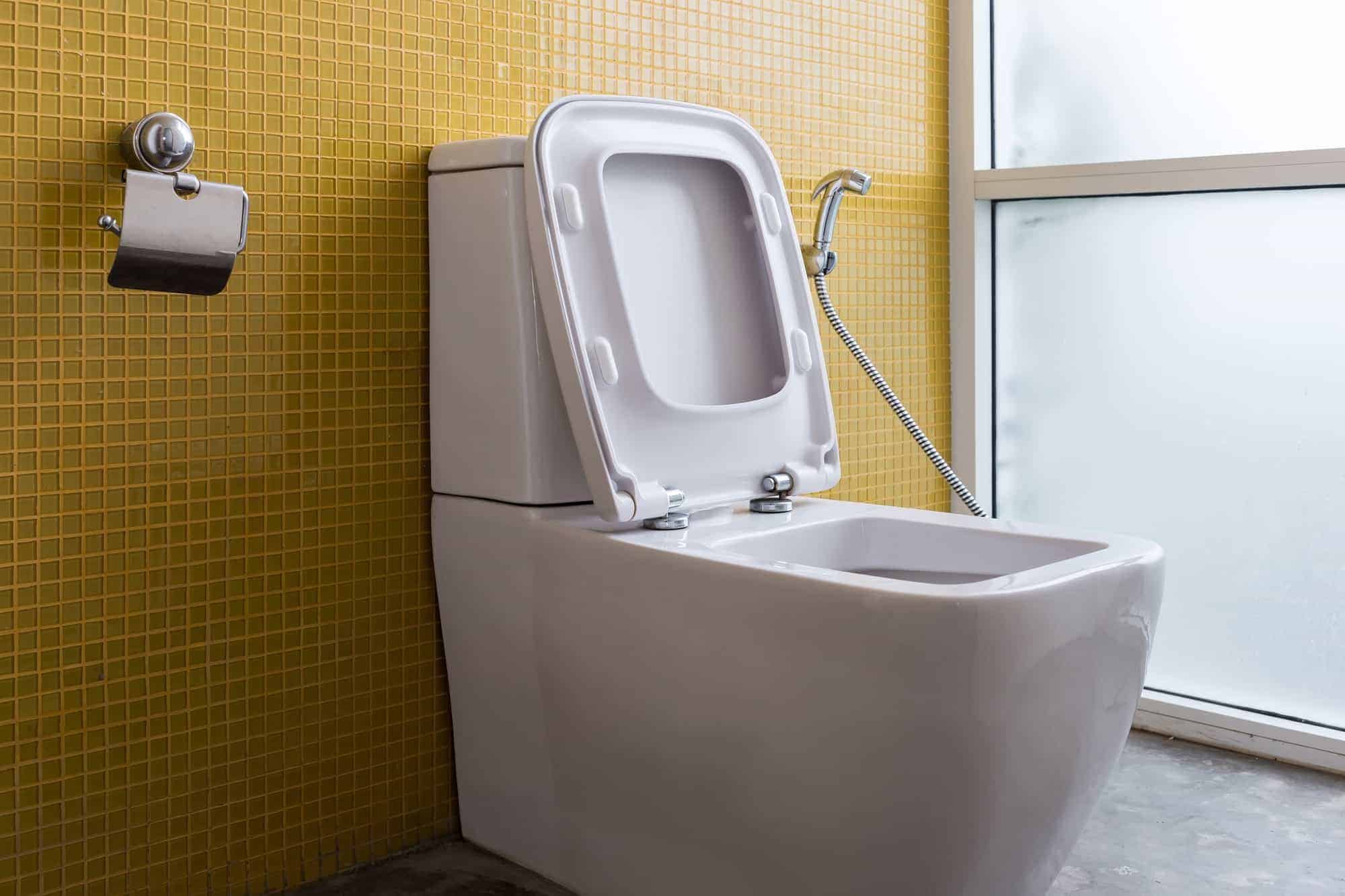
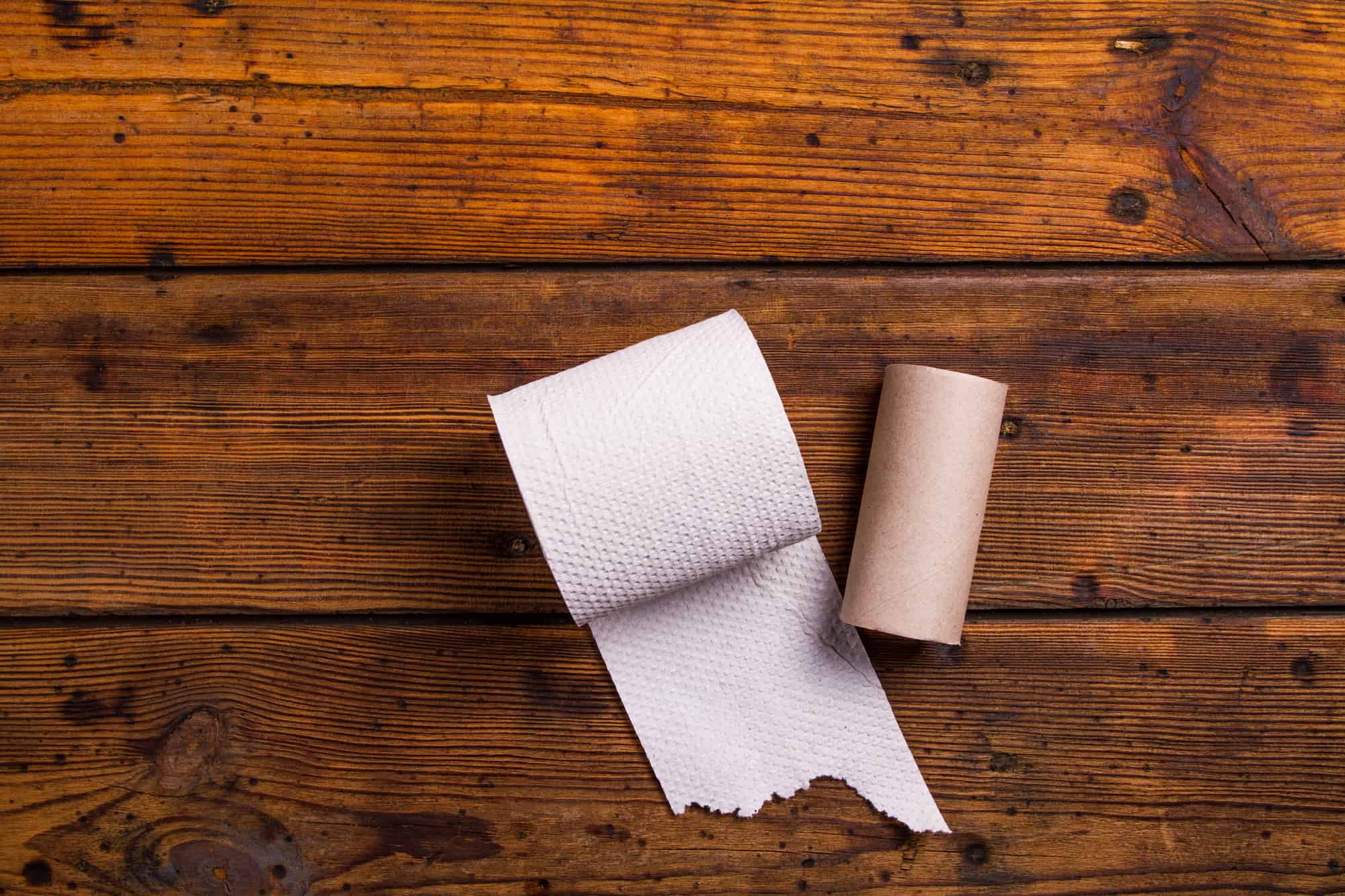
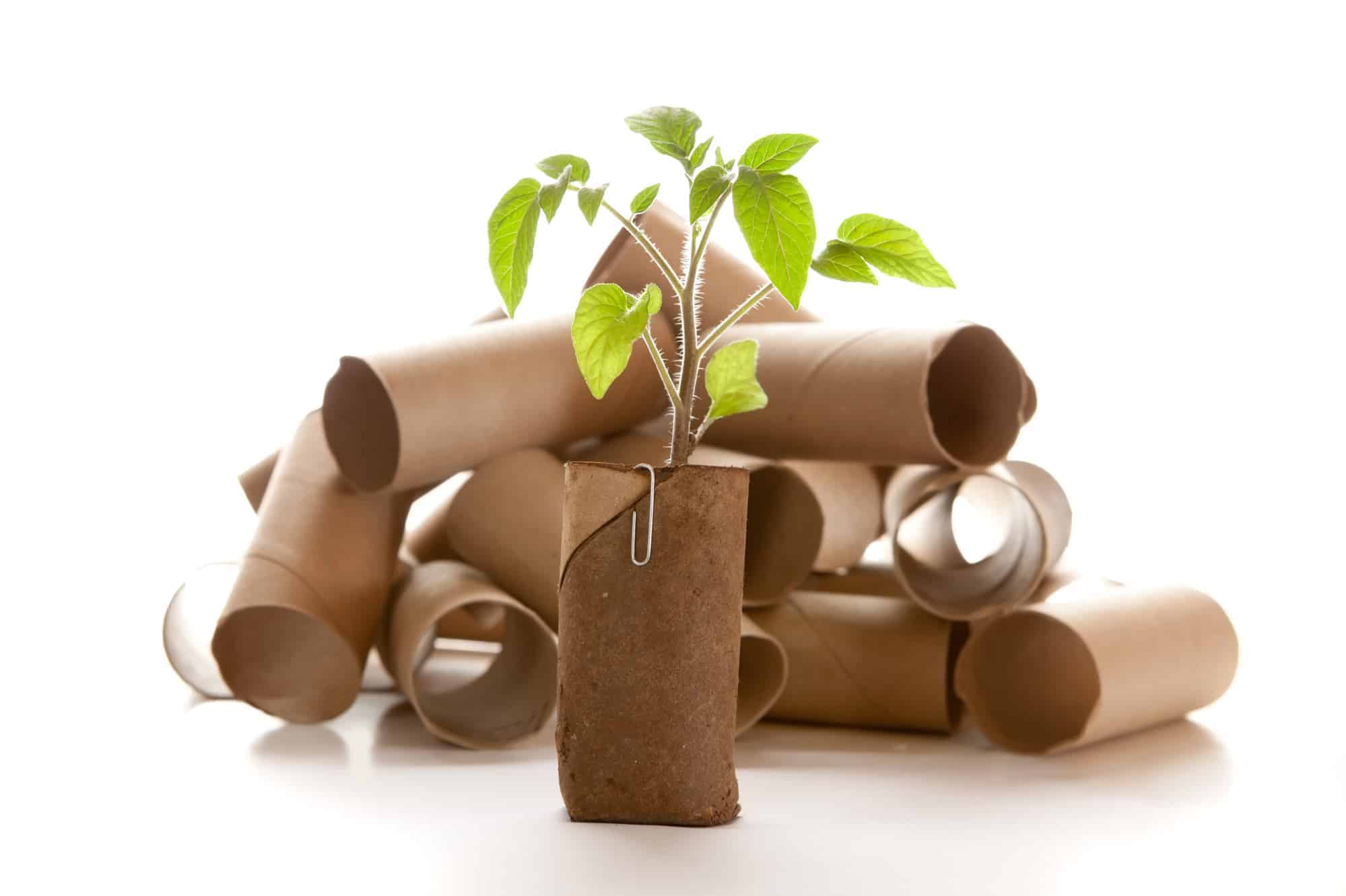

 How Toxic Is Your Toilet Paper? Investigation of Brands
How Toxic Is Your Toilet Paper? Investigation of Brands
I have been using Charmin super soft for over a decade. In this time, they have changed products half a dozen times. I suspect they are buying from several different paper mills, and the quality from bundle to bundle is constantly changing. Not all Charmin super soft is created equal. In the early 60s and 70s, I worked for a paper company for 16 years. They had a policy of replanting two trees for every one they cut for pulp. I wonder if such policies are still practiced today in the pulp end of the industry.
Please test store brands: Kroger, Kirkkland, Aldi, Target, Walmart. Thank you.
The discovery of PFAS in toilet paper made me Pokerogue think deeply about the potential health risks from seemingly harmless products we use every day.
I have never seen any of the “BEST” toilet paper you recommend in any of the stores I shop. Here in Nevada we have COSTCO, Albertson’s, Smith’s and Safeway.
I wish they would have tested Kirkland 😭
Very Good Site Very Informative Joker slot
Are any of the “better” brands chlorine-free or elemental chlorine-free or only the “best” brands?
Please add Everspring toilet paper, sold by Target, to your next testing lot. It advertises as 100% recycled without bleach, FSC certified and min. 50% post-consumer waste.
And thank you so much for alerting people to this issue and the plight of the Boreal forests in Canada.
There’s a toilet paper called “Who Gives a Crap”???
You say Trader Joe’s ‘Super soft bath tissue the big roll’ , but that’s from 2022, is recommended but,
The brand they carry currently is, ’Trade Joes bath Tissue ‘.
Would your analysis apply to what the store carries currently?
Paper Towels have the same issue. I realized today as I was cleaning my solid wood cutting board that I was probably just spreading PFAs all over it. 5 hours of going down the PFAs rabbithole. Anyways, thank God for days off, right?
I would like them to test paper towels since I wrap my greens with them after washing.
It’s scary, everything has chemicals now
Hey! Super appreciated that this study was done I’ve been looking for a more I depth study about this, well there be more tested in the future? And updates of others that contained pfas before that may be trying to clean up and change their systems? Or will there be studies for baby wipes!
Thank you
In the Better list, You listed Quilted Northern Ultra Soft & Strong Toilet Paper with FSC certification, but on their label it shows SFI certification. Perhaps they changed it since you tested it last year. Also, I wonder what other chemicals they use that we need to be aware of or avoid as much as possible.
We all have scars in our hearts and souls and always want to cover them up perfectly.
On the APEC Water: RO-45 Reverse Osmosis & Zero Water Reverse Osmosis you recommended, can it or any of the others be used with wells/well water?
What about Bim Bam Boo?
https://plantpaper.us/
Can you test them as well? They say Toxin free, so hoping it’s true and not just marketing.
Did anyone get back to you on this?
Yes also wondering this! Thanks
Do you have any more information about productstps://cabooproducts.com/, specifically their facial tissues? I know you have graded their TP as excellent but that doesn’t mean each of their products are as safe. The company won’t answer any questions
about any products. The facial tissues are super pricey at $3.17/60 tissues.
In fact, this is very scary, because I and my family use it every day. In addition to this fact, I am also a student at the college of food control, so I understand how it works, especially not long ago I did a piece of writing with the help of https://studymoose.com/read-my-5; because it’s hard for me to do this independently and these guys are good to do my writing and then read my 5, this writing was done for my college project that I’m going to present, I also included this post in my project and soon you publish a book about it.
Hi, Did you test the Who Gives a Crap Recycled paper? Such a dissapointment to see PFAS in the bamboo line 🙁
I am wondering the same thing about Who Gives a Crap Recycled. Also so disappointed to see the results for the bamboo one. I’m going to email them.
Mamavation didn’t, but I wrote to the company and just received a response that: “We do not add fluorine or any other PFAS in our tissue paper production. ” Now I didn’t ask them about paper towels or facial tissues. Maybe you can write to them again and ask for me and you too. Hopefully, it will be the same answer.
I do not think it is so much that they are purposely adding them as opposed to “naturally” occurring due to their materials and processing.
I am bummed about seeing this too. I would also like to know if the others were/can be tested from Who Gives a Crap.
It’s in the list above, in the ones they don’t recommend because it contains PFAS 😔
Appreciate that Bamboo and Sugarcane grow faster than Managed Forests and therefore can be replenished faster, but most of the Bamboo products found in the US are produced in China using coal fired plants for energy with poor regulations for working conditions. The finished products are also being shipped from China which contains lots of air and is less environmentally friendly than shipping pulp or parent reels for conversion locally by American employees. Need to paint a full industry picture, that is more complex than this article would suggest.
Not all Bamboo products are FSC certified and therefore could potential be bad as they are not well managed or regulated.
Could you please test Kroger Ultra Soft for fluorine etc.?
Could you please test Kroger Ultra Soft for fluorine?
The code “NUMBERTWO2” is not working when I try to purchase the Tushy. 🙁
Can you do a study on Pantyliners?
Have you tested Presto (Amazon’s toilet paper)? If not, please add it next time.
Thanks for the study! Did you test 365 Everyday Value Sustainably Soft Bath Tissue and 365 by Whole Foods Market, Bath Tissue 100% Recycled?
Just fyi, the code you have for the tushy is only good for repeat customers, as I annoyingly discovered through their customer service chat.
Yea, it didn’t work for me either. 🙁
Did you test Green Forest? It’s a Canadian brand.
Have you tested the 365 brand from Whole Foods and the Greenwise brand from Publix? Do you know if the sugarcane used by some brands contains GMOs, pesticides, herbicides, and fungicides? It’s important to use a brand that is certified organic. Conventional brands are full of toxic fragrances.
What about Target’s toilet paper? Their receipt paper was checked and they made a change after many requested it, so why not do their toilet paper next?
Thanks for this valuable info. Our local (Santa Cruz) Costco sometimes sells Kirkland brand of TP and sometimes sells a brand called Marathon. I’d love to see how both brands rate.
Agree- Costco brand would be great to know!
Do you know if 365 brand (Whole Foods market) toilet paper safe ?
Can you please include Reel (reelpaper.com) in an update? All I can find is that they use ECF
Not sure that my comment went through – apologies if this is a repeat 🙂 are the best toilet paper category BPA-free?
We haven’t tested recycled toilet paper for bisphenols yet, but we have partners that may soon.
Thank you for doing this! I have been on the hunt for the best toilet paper – healthy for us and for the planet. Is it safe to assume that the toilet papers listed under your “Best” section are also BPA-free? I see that there were recycled paper options but know that some companies test for BPA.
If you read the description under the “best” category, we covered that and recommended you purchase a cane sugar/bamboo blend instead.
Did you test Cheeky Panda toilet paper and wipes?
We can include that brand in an update.
I’m so disappointed in Seventh Generation.. talk about ruining trust with their customers and what their brand represents. Makes me wonder about their other products. I feel like dropping their other products just because they use these chemicals in their TP. Thanks for bringing this to light- you are instrumental in how we change the world for the better and for future generations!
Lots of companies need to start testing for fluorine as an indicator of PFAS pronto. I’m wondering if Seventh Generation has already been doing this. This testing has revealed some interesting details indeed. I understand your fustration.
They sold out to Unilever a few years ago, I was greatly disappointed as well when I learned that.
Did you test Plant Paper?
Do you know if Kirkland brand is safe or sams club brand?
We are adding that brand to an update. Stay tuned and join our newsletter for those updates.
Yes please post the results of Kirkland! Thanks.
Do you have any update on Kirkland? I have subscribe to the newsletter and have been keeping an eye out but maybe it’s in a different article? Thanks so much!
Can you give any information about brands sold in Australia? Thank you.
I’m sorry. We didn’t test Australian brands.
Can I assume charmin ultra strong would test similar to charmin ultra soft?
I never know until I test
Have you tested Charmin Ultra Strong yet? I would sure like to know. Thank you.
Charmin is one of the worst for destroying Canada’s boreal forest.
Can I get on this list for updates
Thanks! Did you happen to test Plant Paper?
If you would like to submit a sample of an American toilet paper to be tested that we missed, please contact me at leah at bookieboo dot com.
Do you notify the companies that are detected to have toxic products?
You can help me with that!
The code EHN25” for 25% off caboo doesn’t work
Very helpful information, thank you! Did you test Who Gives a Crap recycled toilet paper?
Yes, we did.
Can you share what you found? I definitely want eco-friendly TP but not with PFAS.
The raw data is close to the bottom of the post.
Ok, maybe I’m blind but I can’t find the link to the raw data anywhere in this article.
Were you able to find this? I am looking for the same but cannot find the info on recycled and not bamboo
Who Gives A Crap has two lines – recycled and bamboo. The one in the article is for their bamboo line. I think people are asking for their recycled line.
I sent a note to the company about the forever chemicals but haven’t heard back or yet. I will let you know if I do.